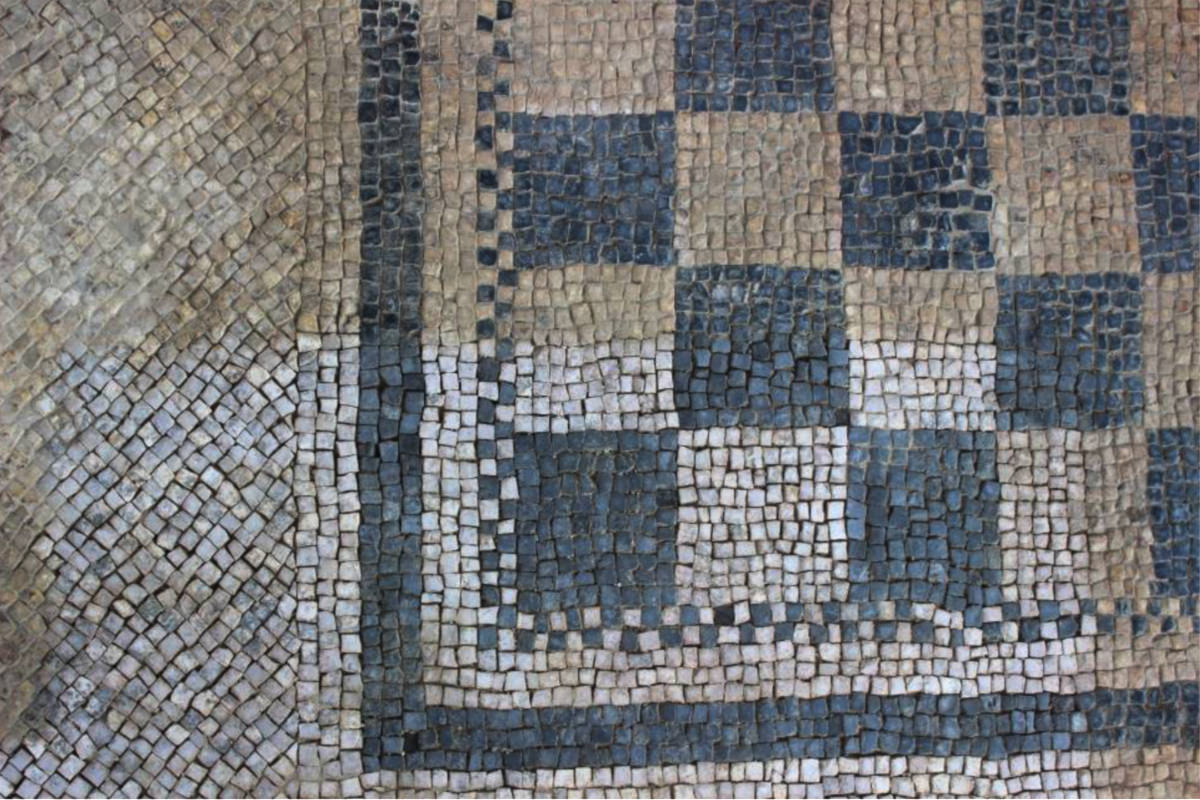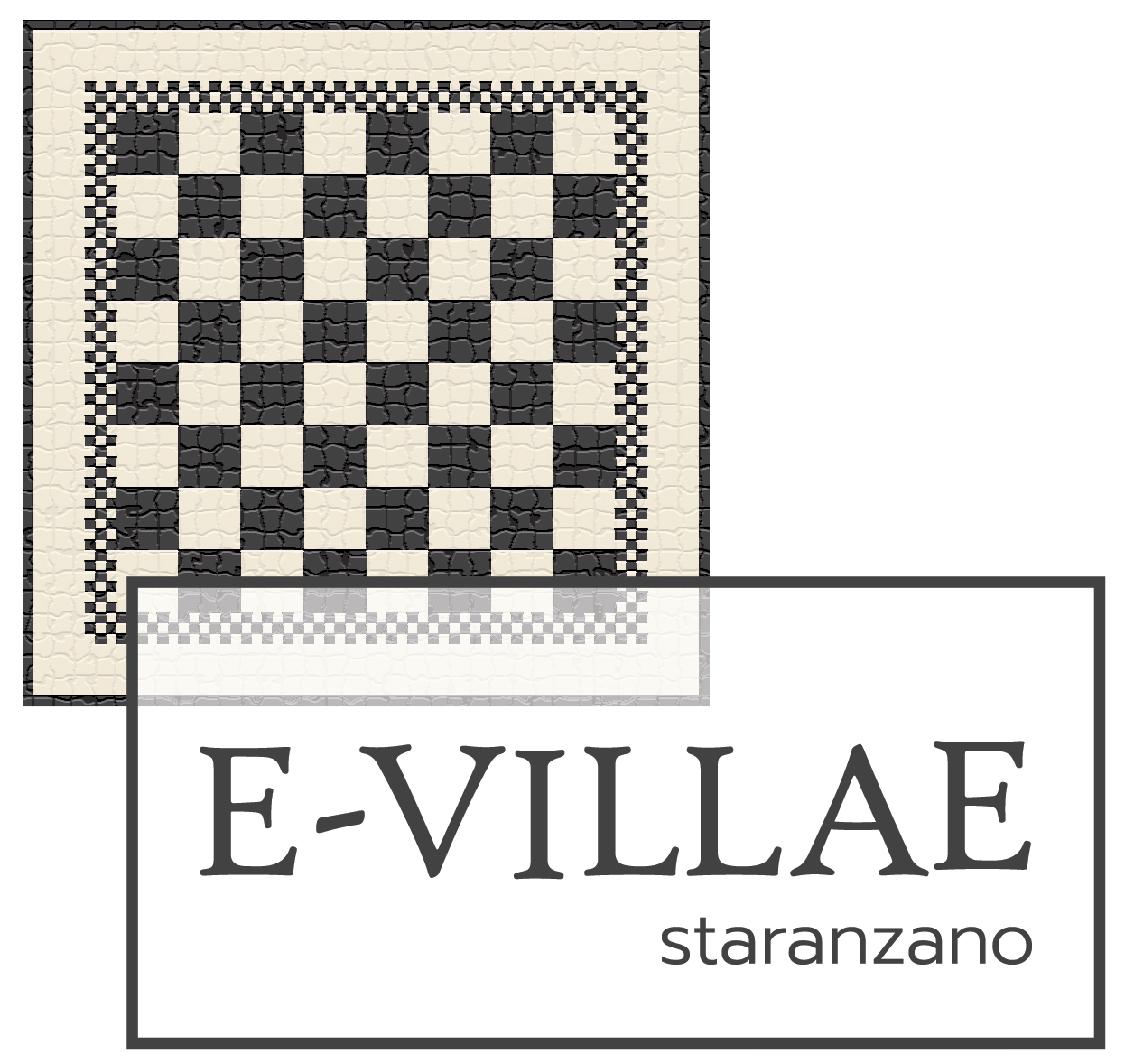il video dedicato all'intervento conservativo
STATE OF PRESERVATION
The E-Villae project included conservation work on the mosaic of the Roman villa in Staranzano, intervening on the state of conservation of the mosaic, which, seven years after the last restoration work, was still in fair condition.
On initial analysis, the grouting of the perimeter margin was locally fragmented resulting in the detachment of the last rows of tiles, and the entire room was covered with dusty environmental deposits, plant and animal residues that rendered the central checkerboard and the chromatic value of the constituent materials illegible.
The mosaic surface was found to be populated with green algae whose color was intensified by bringing in moisture, higher type seedlings, and moss, especially along the interstitial mats.
The physical barricades at the two entrances proved insufficient to protect the pavement from biological attack, making it possible for numerous higher type plants and mosses to be present at the thresholds.
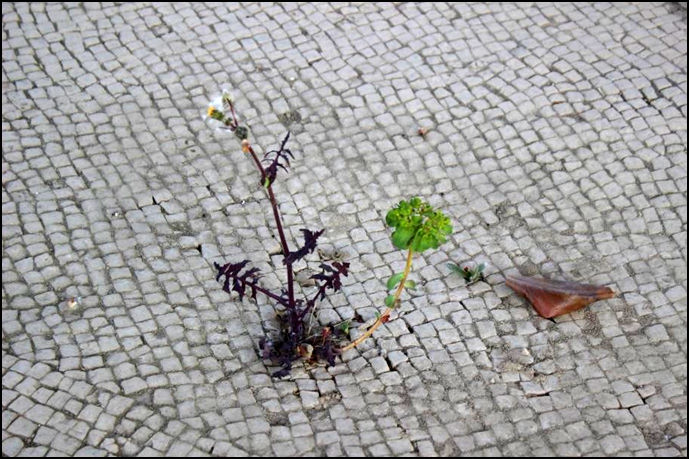
THE RESTORATION WORK
The first operation carried out by the restorers was disinfection by spray application of environmentally friendly biocide.
The product was spread on all mosaic and masonry surfaces and left to act for a few days. At the same time, the upper plants were uprooted from the terracotta of the entrances with the utmost caution to avert the risk of disconnection.
Biocide treatment was repeated at the end of the intervention before final protection.
Preliminary dusting was an extremely important operation in order to understand the degree of adhesion and cohesion of the tessellation and to identify unraveled tiles. For this reason, it was patiently performed manually using soft brushes
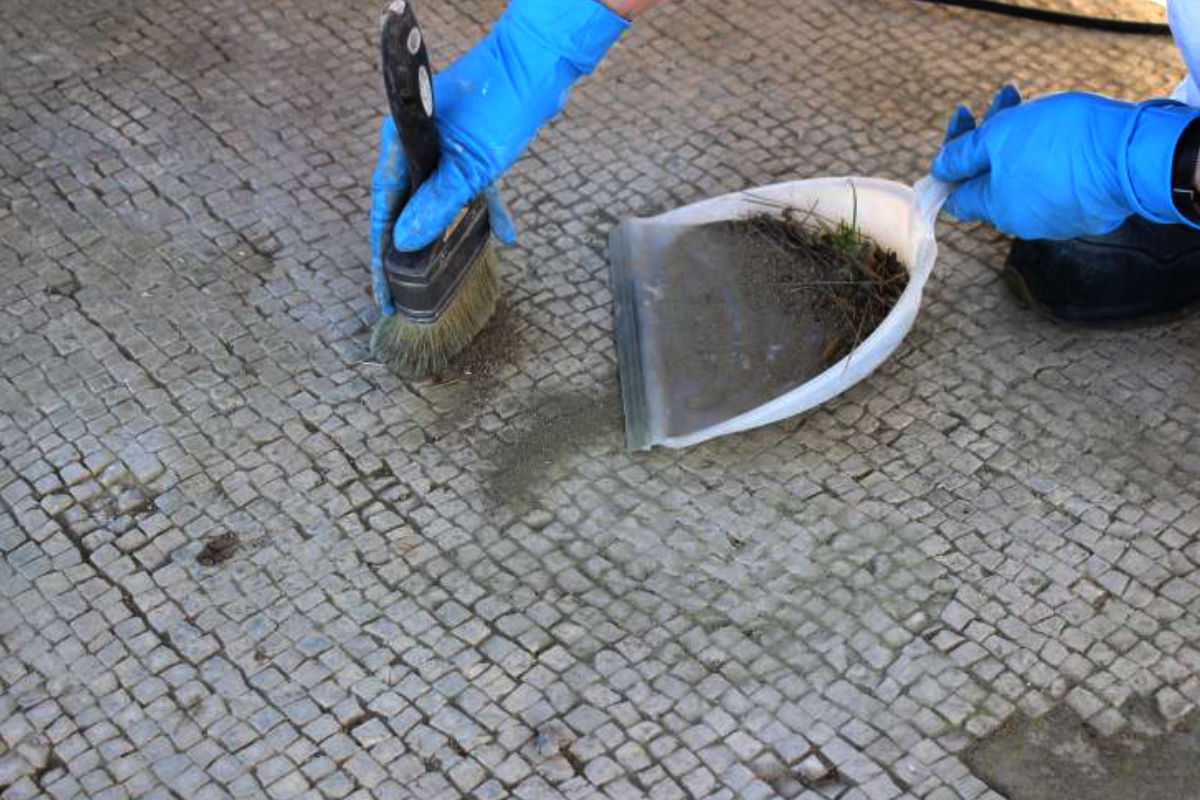
At the same time, mechanical removal of moss along the interstices of the tiles was carried out using a scalpel.
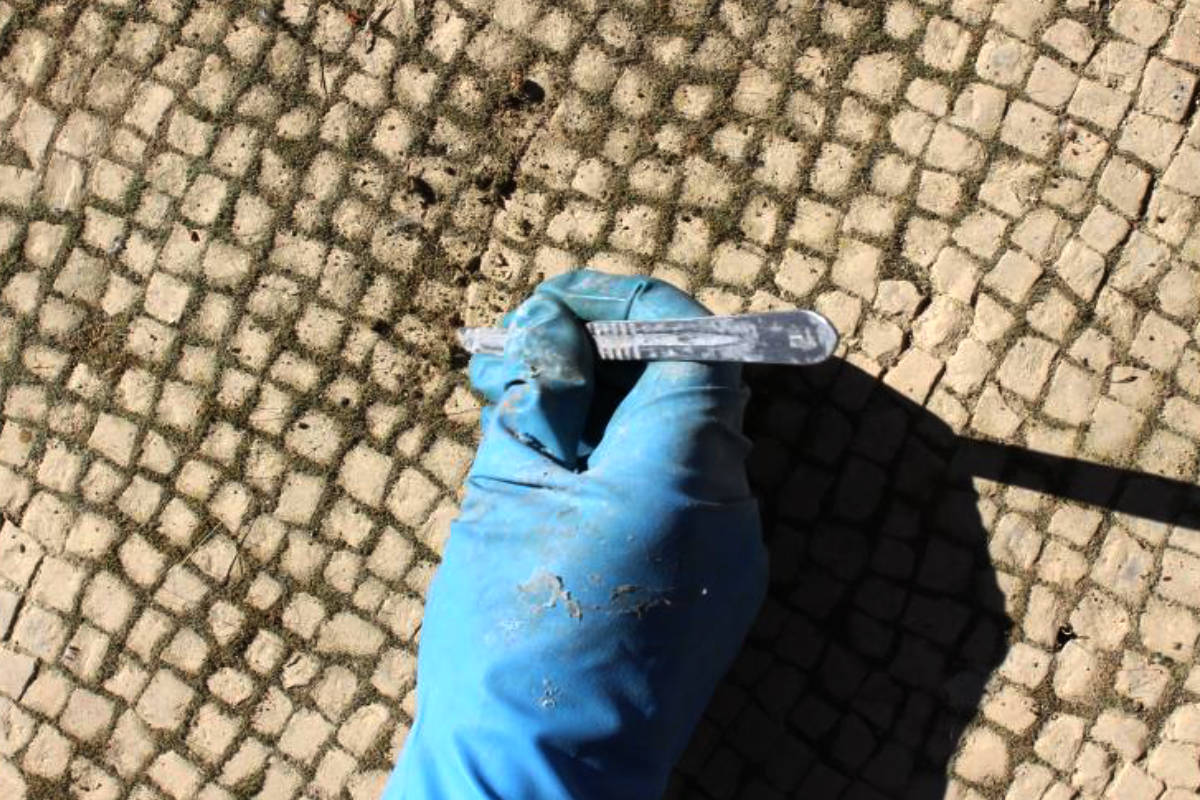
The dusting revealed a very blurred surface, the reading of which was still very laborious. To deepen the removal of inconsistent deposits the entire surface was washed with vaporjets, nylon brushes and cellulose sponges, taking care to collect water stagnation to allow for rapid drying.

The dusting revealed a very blurred surface, the reading of which was still very laborious. To deepen the removal of inconsistent deposits the entire surface was washed with vaporjets, nylon brushes and cellulose sponges, taking care to collect water stagnation to allow for rapid drying.

The perimeter saves were supplemented in the ruined portions with lime and sand-based mortar added with powdered pigments.
Tiles that were movable but sufficiently anchored to the bedding mortar were fixed with injections of acrylic resin in an aqueous suspension, while those that were completely detached were relocated with bedding mortar.
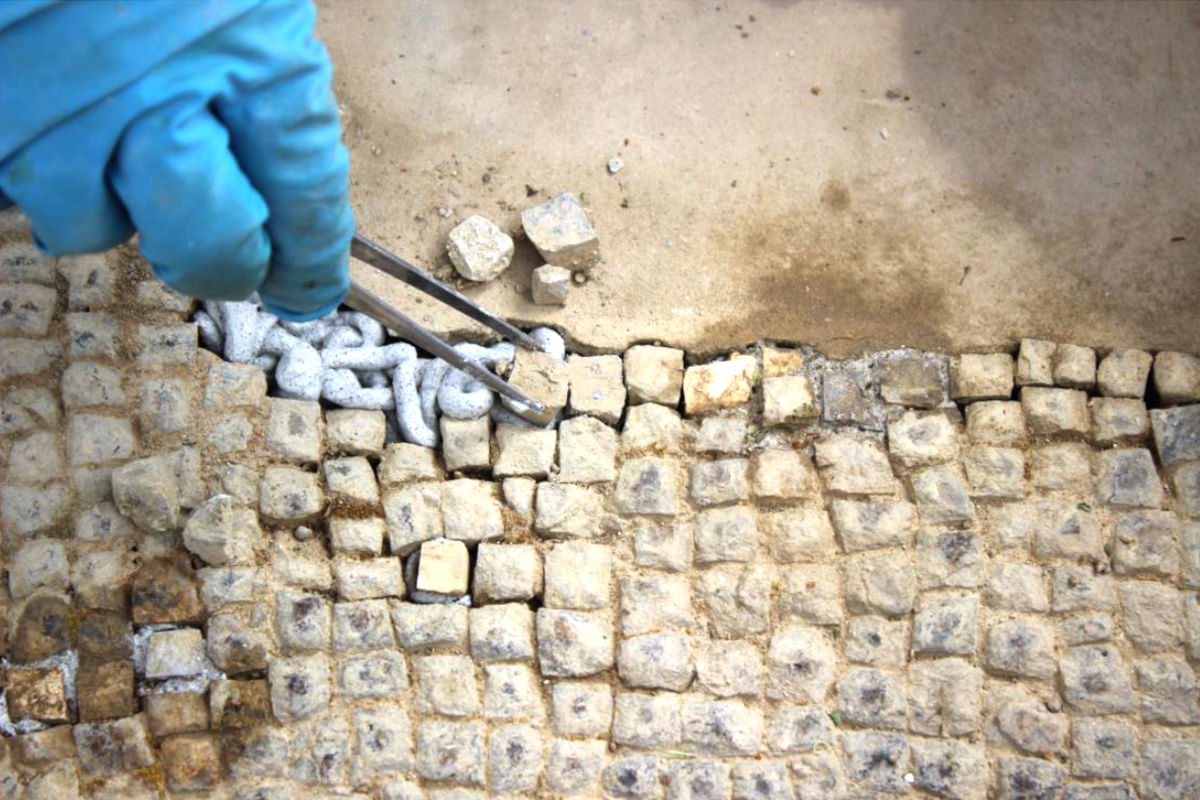
However, some tiles were lost, so they were replaced using stone tiles of a similar lithotype to the original one.
Although large amounts of topsoil were removed by sponge washing and steaming, however, the initial aesthetic result was not entirely satisfactory.
Therefore, planning to carry out the consolidation, in agreement with the Construction Management, it was decided to deepen the cleaning of the tessellated tiles with the use of the micro-sandblaster, so as to dry remove even the concreted earthy deposits and ensure the proper penetration of the consolidating product on the surfaces of the tiles and in the interstitial mortars.
As expected, the operation brought out the chromatic value of the materials and enabled the removal of mosses from the interstitial spaces to be perfected.
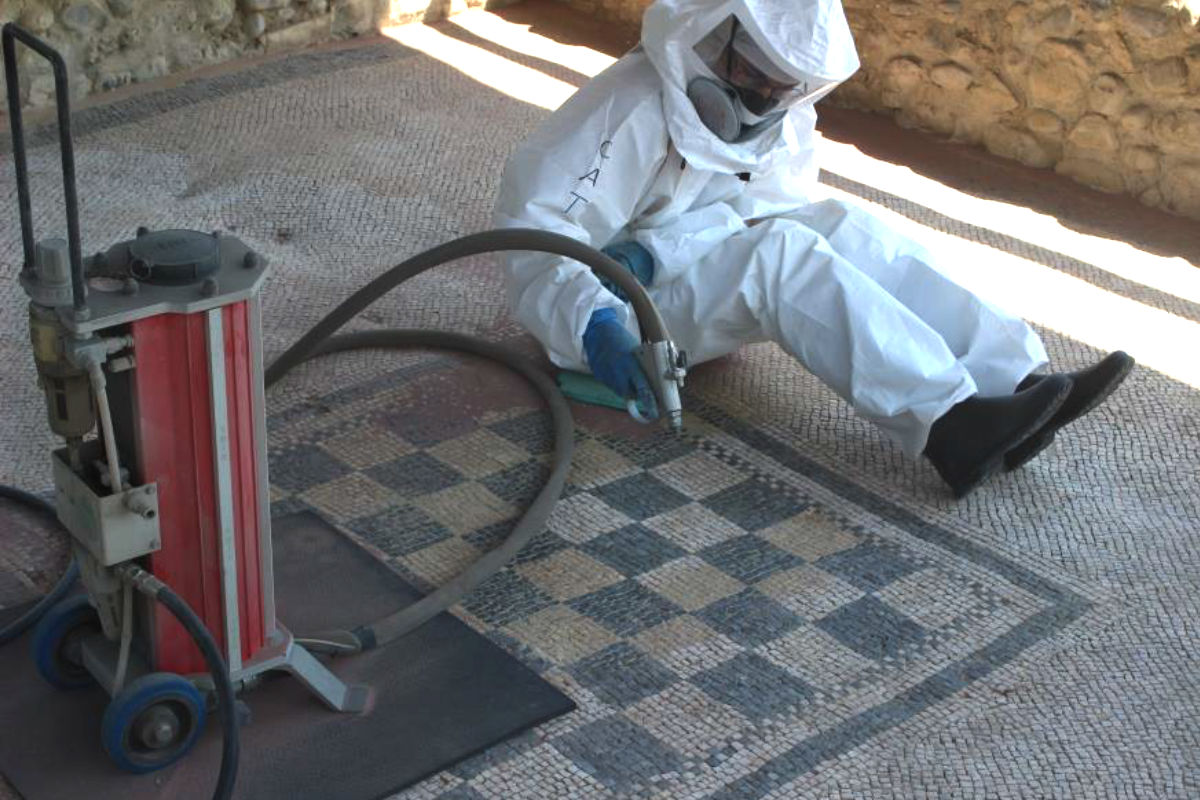
Once the cleaning was finished, grouting was done in places where they were damaged and where higher plants had developed.
The joints between the bricks in the thresholds were also filled with lime mortar and pigmented sand in order to slow down the resurgence of plant growth.
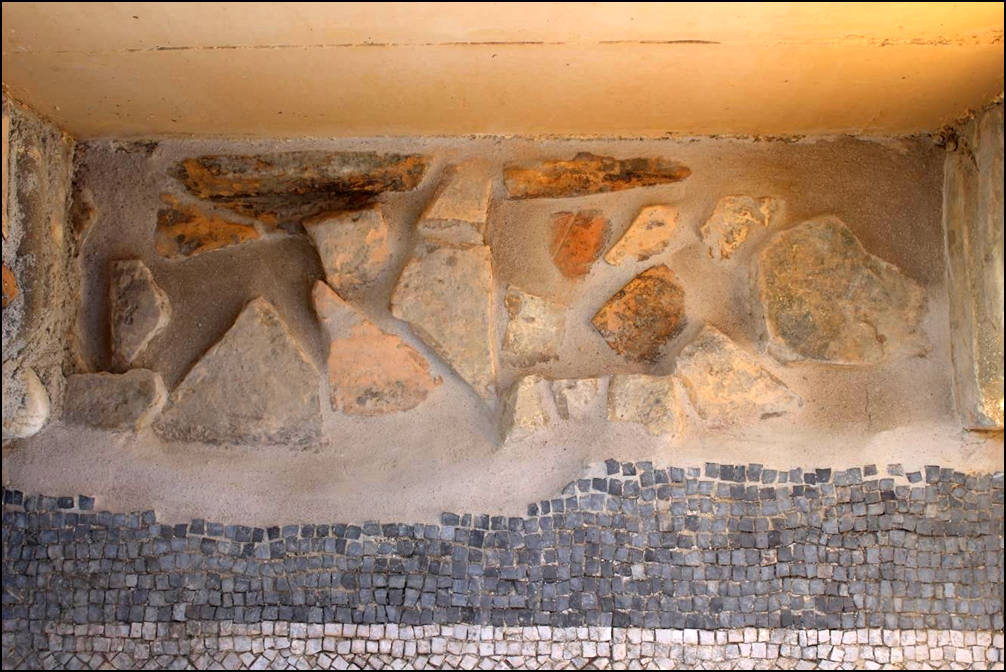
A consolidating and water-repellent product based on ethyl silicate combined with siloxanes was spread on the perfectly cleaned and dusted surface with an electric vacuum cleaner and brush.
The latter treatment thus allows for better resistance of the treated surface, predisposing it favorably to periodic, venturous conservation work.
